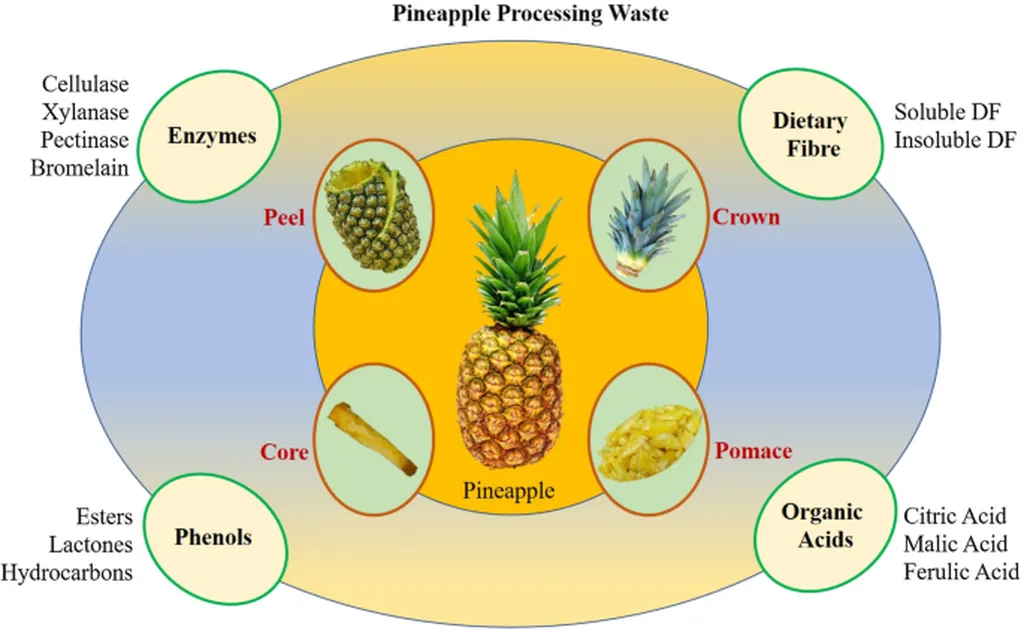In a significant stride towards sustainable energy solutions, researchers have demonstrated a novel method to optimize bioethanol production from liquid pineapple waste. This innovative approach, published in the BIO Web of Conferences, leverages immobilized Saccharomyces cerevisiae var. ellipsoideus, a yeast strain, within a PVA-alginate-sulfate matrix to enhance ethanol yield. The study, led by Rosid Sarina Mat from the School of Agricultural Science and Biotechnology at Universiti Sultan Zainal Abidin, offers promising insights for the agriculture and bioenergy sectors.
The research addresses the pressing need to reduce greenhouse gas emissions and transition from fossil fuels to renewable energy sources. By utilizing industrial waste, such as liquid pineapple waste, the study not only promotes waste reduction but also taps into a rich sugar source for bioethanol production. “This method provides a sustainable way to convert agricultural waste into valuable bioethanol, contributing to a circular economy,” said Rosid Sarina Mat, the lead author of the study.
The study employed a statistical approach with a 2-level, 3-factorial design to optimize four key variables: initial inoculum, temperature, pH, and agitation speed. The optimal conditions for bioethanol production were identified as pH 5.5, 30 °C, and 200 rpm using 3 g of beads, yielding a maximum ethanol concentration of 10.0438 g/L. The post-immobilization treatment of beads with boric acid, sodium alginate, and sodium sulfate significantly enhanced bead stability and yeast activity, leading to improved ethanol yield.
Field Emission Scanning Electron Microscope (FESEM) analysis confirmed the successful immobilization of S. cerevisiae var. ellipsoideus within the matrix, validating the efficiency of the technique. This research highlights the potential of immobilized yeast strains to produce bioethanol from agricultural waste, offering an environmentally friendly and sustainable approach to renewable energy production.
The commercial implications for the agriculture sector are substantial. By converting pineapple waste into bioethanol, farmers and agribusinesses can generate additional revenue streams while reducing waste disposal costs. This innovation aligns with the growing trend of valorizing agricultural by-products, creating new opportunities for sustainable development in the sector.
The study’s findings could shape future developments in the field by encouraging further research into the immobilization of yeast strains for bioethanol production from various agricultural wastes. As the demand for renewable energy continues to rise, this method offers a scalable and efficient solution that can be adapted to different types of waste, contributing to a more sustainable and circular economy.
In conclusion, this research represents a significant advancement in the quest for sustainable energy solutions. By optimizing bioethanol production from liquid pineapple waste, the study not only addresses environmental concerns but also opens up new economic opportunities for the agriculture sector. As the world moves towards a greener future, innovations like this will play a crucial role in shaping the landscape of renewable energy.

